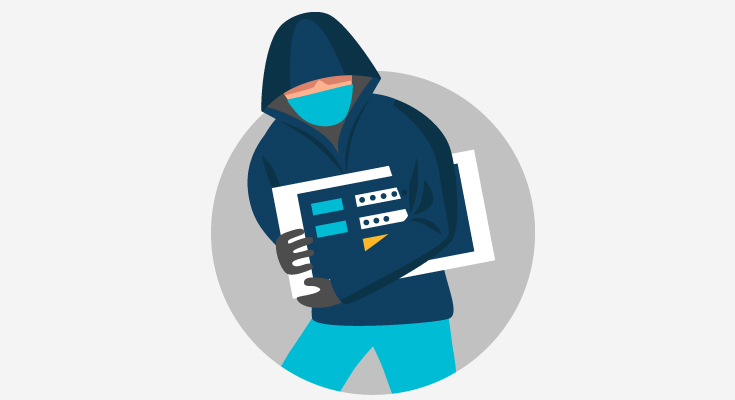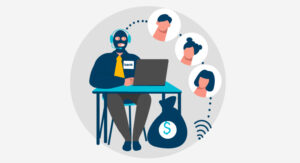Third-Party Fraud – Definitions and Examples

Third-party fraud is when a fraudster uses an individual’s or company’s information to commit fraud. Third-party fraud is more commonly known as identity theft. It is the type of fraud that impacts most individuals across the globe every year.
In 2023 alone, over 1.4 million cases of identity theft were reported to the FTC. The number is expected to double by the next year.
Third-party fraud is committed by all types of criminals – from individuals trying to use a stolen credit card or take out a loan in somebody else’s name.
While third party fraud usually involves using someone else’s personal information to commit fraud, some fraudsters also use synthetic identities.
The primary victims of third-party fraud are financial institutions, retailers, eCommerce stores, and, of course, the people whose identities have been stolen.
Difference Between Third-Party, First-Party, and Second-Party Fraud
If you want to know how third-party fraud differs from first and second-party fraud, it helps to understand the other types:
- First-party fraud is committed by a person or a company in their own name. Most common examples of first-party fraud include falsifying information for credit applications, claiming dishonest refunds, or disputing legal transactions to claim chargeback fraud.
- Second-party fraud involves using an individual’s or company’s details. But the fraud is committed by someone who has given those details voluntarily. Someone may allow their account to be used for money laundering, or they may work with a fraudster in a “fake merchant” scam.
In both first-party and second-party fraud, the legit holder of the details (or accounts) is involved in the fraud. In third-party fraud, the individual or the company whose details are being used has no idea that their information has been stolen.
Types of Third-Party Fraud
Third-party fraud comes in all shapes and sizes, and fraudsters constantly work to find new and inventive ways to commit the fraud.
Some of the most common types of third-party fraud include:
- Account takeover fraud – As the name suggests, this type of fraud involves criminals gaining access to individual bank accounts. Then, they use the bank account to make purchases or divert funds.
- Credit Card Fraud – Credit card fraud involves all kinds of frauds that happen due to stolen or cloned credit cards. Once a fraudster illegally obtains a credit card, they use it to make purchases or take cash loans.
- New Account Fraud – This type of fraud involves fraudsters opening new accounts using stolen personal details. New account fraud can also happen with synthetic identities or by combining fake and legitimate information.
Examples of Third Party Fraud
Here are some of the best real-life examples of third-party fraud:
- In 2017, a fraudster named Kenneth Gibson opened around 8,000 false PayPal accounts in the names of employees of a company he worked for in the past. He kept moving money around in small amounts, which he withdrew via an ATM. It was the repeated trips to the ATM that led to the discovery of the fraud.
- Anthony Lemar Taylor stole the identity of golfer Tiger Woods, initially by fraudulently obtaining a driver’s license in his name. He used the stolen identity to purchase goods worth $17,000, which included a car and a 70-inch TV. Eventually, he was caught and sentenced to jail.
- In 2018, fraudster David Matthew Read went on a $169,000 “shopping spree” using a replacement American Express Black card that he managed to obtain in the name of the actress Demi Moore.
While these fraudsters got caught, a huge number of third party fraud goes undetected and unpunished. However, a vast amount of third-party fraud goes unpunished.
Third-Party Fraud Trends
Businesses like banks, credit reference agencies, and card providers are the ones who report new trends in third party fraud.
In January 2023, Experian reported that third-party fraud was growing in relation to current accounts, savings, card, and loan accounts.
One particular trend is an evolution in fraudster’s methods to collect personal data they need to carry out the scams. Trends include:
- Fake job advertisements
- Messages pretending to be family members
- Fake investment schemes
- Message about fake government assistance grant schemes
- Emails pretending to be businesses.
Some other fraudsters look to take advantage of the popularity of crypto investments and use underground fraud as a service.
How to Prevent Third Party Fraud?
Preventing third-party fraud is becoming more and more important for both individuals and businesses.
The basics of preventing fraud, such as using complex and unique passwords, installing cybersecurity software, and being vigilant when using public WiFi networks, are important. Educating your user base on how to stay vigilant is also important.
A huge number of third-party fraud happens due to human error. People need to be trained to recognize spam emails and fake websites.
Businesses should think about investing in third-party software that helps verify the identities of businesses and consumers.













